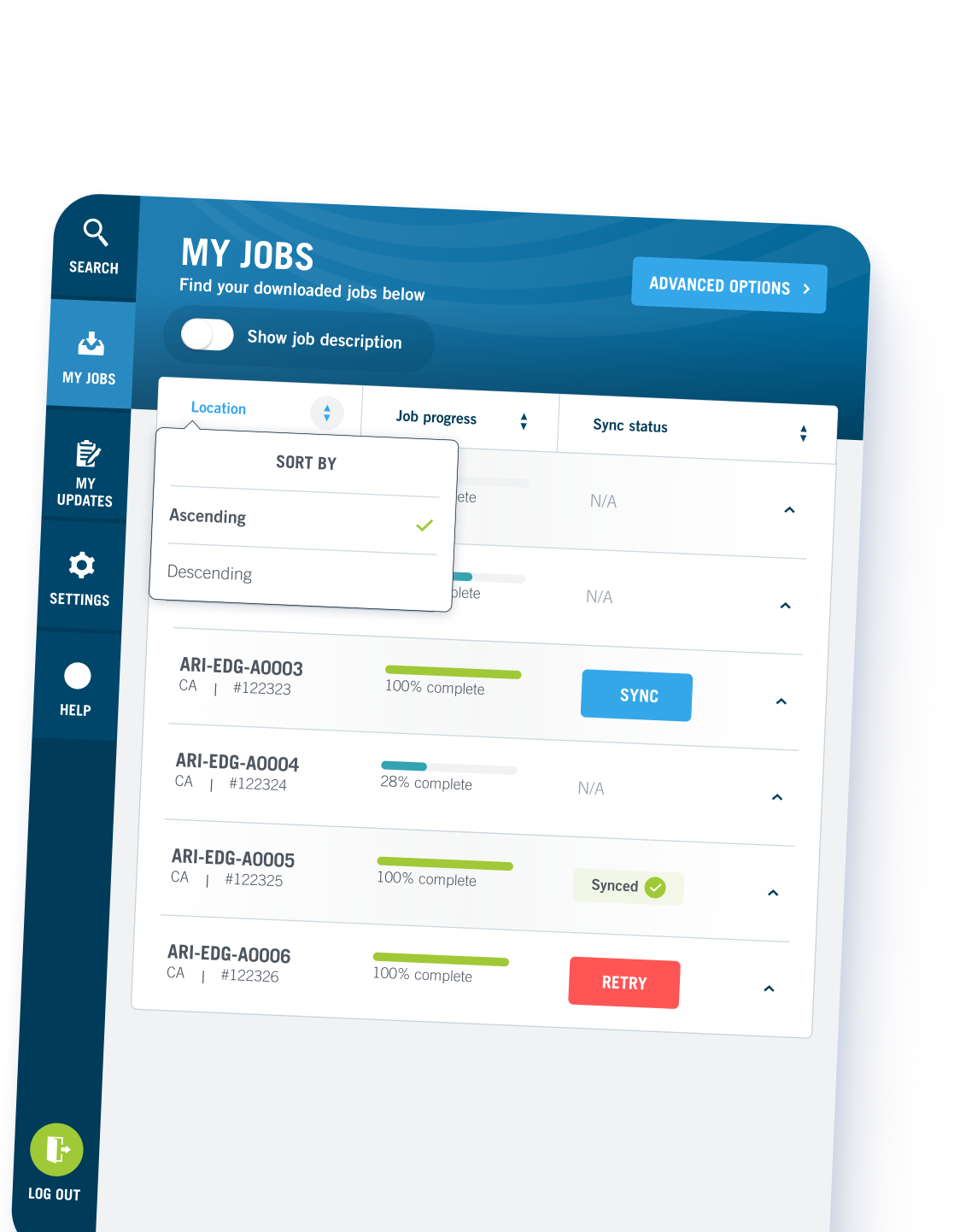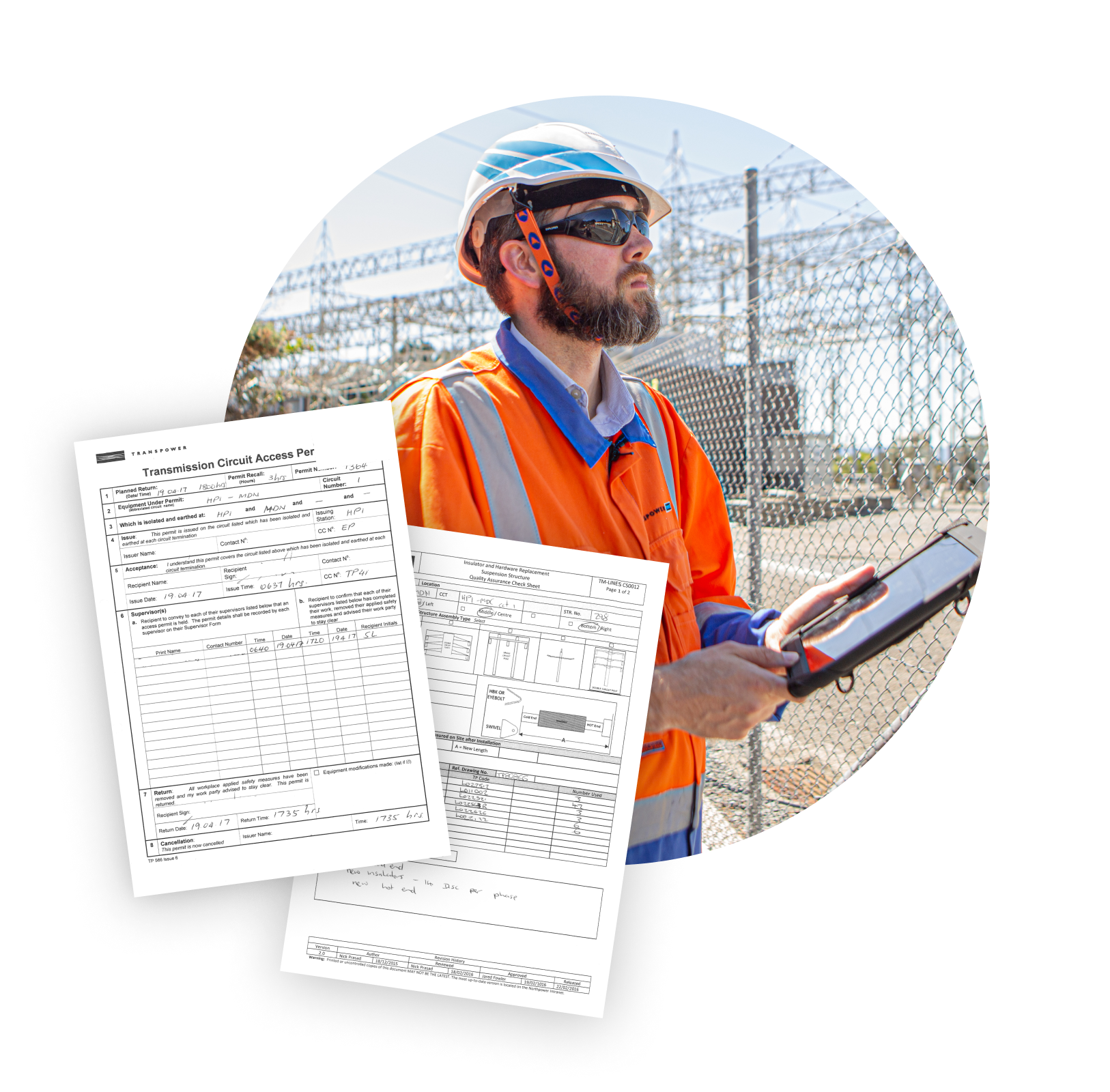
Power to the people
Digital transformation and workforce app design and development for Transpower
Transpower are the people who manage New Zealand’s electricity grid. They’re responsible for maintaining billions of dollars worth of grid assets - and keeping the lights on for all of us. They needed to move away from a manual approach to collecting critical data, and towards a streamlined system for a brighter future. We partnered with Transpower to define that vision and create a product roadmap to take them from today to tomorrow.
The lay of the land
Transpower keep New Zealand's energy flowing by transporting bulk electricity to where it’s needed, up and down the country. Their job is to accurately predict demand and ensure that the right grid assets are always up to the task.

In order to do this, they need a clear view of the state of these assets so they know where to invest their resources, and plan maintenance and improvements up to 10 years ahead.
With their existing process, this was a huge challenge. They had many different service providers manually collecting information using a paper-based system and then duplicating that effort to get it into Transpower’s system.
Down the line
Before we could streamline Transpower’s systems, we needed to get a deep understanding of their current processes. We began by collaborating with all the key stakeholders - from the ELT to engineers and service providers - reviewing their workflows from beginning to end. We then headed into the field ourselves, shadowing technicians to get a close up of view of their unique challenges - outdoors, in remote areas and often with little connectivity. Using all of these insights we produced a roadmap for the future that could be delivered over multiple years.
Flicking the switch
To help Transpower progress from their manual approach, improve data quality and function more efficiently, we produced Mātai - an iPad app that integrates with IBM's asset management system, Maximo. This bespoke solution is fit to handle large amounts of complex technical data while streamlining the way in which that data is collected. Mātai - the name chosen by Transpower people, and validated with Māori - means ‘to inspect, examine, investigate, scan, observe, note'.

To ensure that Mātai would make life easier for field engineers, it needed to respond to their unique set of needs: Knowing these users would be wearing heavy protective gear, and operating in harsh conditions, we designed a simple UI with high contrast and large touch areas. Health and safety is Transpower's top priority, so we broke down the task flow to reduce any on-screen clutter. Mātai also gives engineers the ability to work offline when they’re out of range, tracking their progress and syncing the data as soon as a network becomes available.
Mātai has been thoughtfully constructed to integrate with Transpower’s existing systems: We leveraged areas they’d already invested in such as their geospatial mapping system, which allows users to easily view different access tracks; and image capture which improves their ability to track and identify faults.
So far, the uptake of Mātai by service providers has been a cool 100%.

We continue to support the product today, helping to evolve it for different use cases, with its modular design supporting the addition of new features as we go. Next steps may include digitising the manuals to make it easier for engineers to find information when they’re in the field, and we’re looking into the use of machine learning to help identify where maintenance is needed - well before it becomes a problem.

Let there be light
By simplifying and standardising their processes, we have not only helped to revolutionise the way Transpower work today but ensured that they’re well set up for tomorrow.
A clearer view of the data and more efficient systems mean Transpower can continue to keep stability across the grid, even as demand for electricity grows. We’d say that’s power to the people.